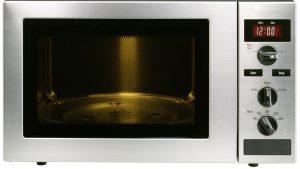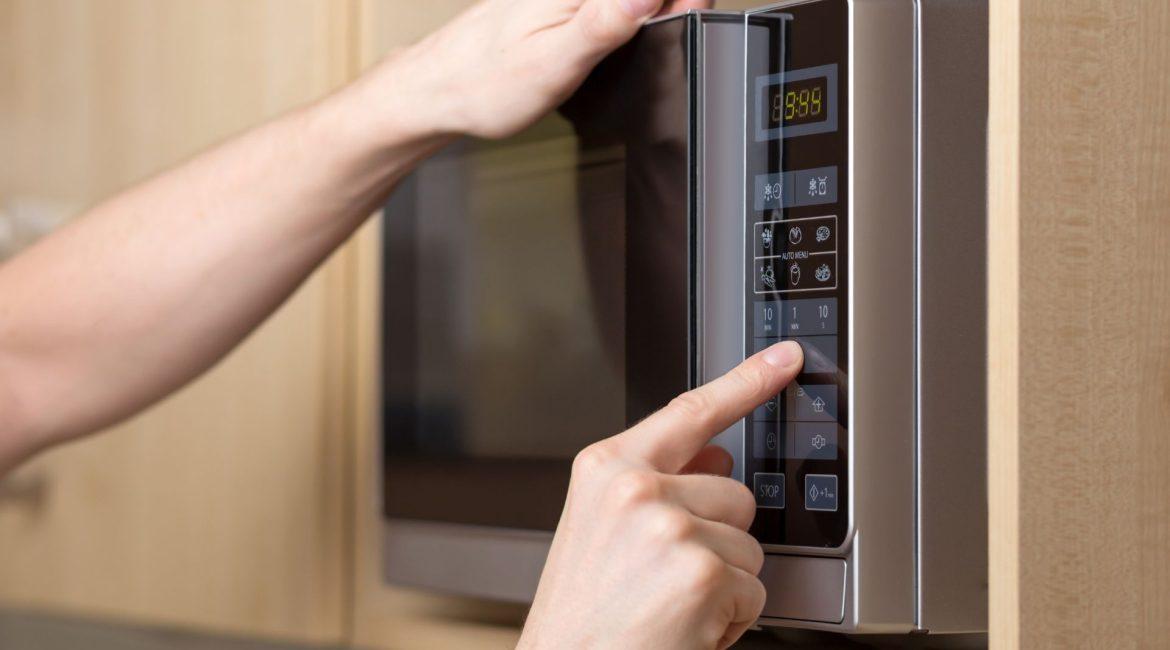Hey there, cookie lovers! 🍪 Ever wondered if you can speed up your baking game by using a microwave to soften that delicious chocolate cookie dough?
Well, you’re in the right place!
In this blog post, we’re diving into the ins and outs of softening cookie dough in the microwave.
Let’s whip up some mouthwatering cookies together, the quick and easy way.
Microwave can be used to soften chocolate cookie dough: Is this true?
Yes, you can use a microwave to soften chocolate cookie dough, but you need to be careful to avoid overdoing it, as this can cause the dough to become too soft and lose its texture.
Here’s how you can do it:
Cut the Dough: Start by cutting the cookie dough into small, evenly-sized pieces. This will help it soften more evenly in the microwave.
Microwave in Short Intervals: Place the cookie dough pieces on a microwave-safe plate or container.
Use a low power setting (e.g., 30% power) to microwave the dough. Start with short intervals, such as 10-15 seconds at a time.
Check and Stir: After each interval, check the dough’s softness. If it’s not soft enough, give it another short burst in the microwave.
Be sure to stir the dough between intervals to distribute the heat evenly.
Monitor Carefully: It’s crucial to keep a close eye on the dough in the microwave.
Chocolate cookie dough can melt quickly, so you want to stop the microwave as soon as it reaches the desired softness.
Use a Microwave-Safe Cover: To prevent the dough from splattering in the microwave, you can place a microwave-safe cover or microwave-safe paper towel over the dough while microwaving.
Remember that the exact time required to soften the cookie dough may vary depending on the dough’s temperature and your microwave’s wattage, so it’s essential to use short intervals and check frequently to prevent overheating and melting.
Once the dough reaches the desired softness, you can proceed with your cookie-making process.

Let’s delve deeper a little more and Further Explanation here.
Let me explain these points mentioned further. let’s break down the steps in more detail:
Cut the Dough.
To start, you’ll want to take your chocolate cookie dough and use a knife or a dough cutter to divide it into small, evenly-sized pieces.
The reason for doing this is to ensure that the dough heats up evenly in the microwave.
If the dough is in one large piece, the outer edges may become too soft while the inner parts remain cold.
Microwave in Short Intervals:
Place the cut cookie dough pieces on a microwave-safe plate or in a microwave-safe container.
It’s important to use a low power setting on your microwave, typically around 30% power.
The low power setting allows for gentler and more controlled heating. Starting with short intervals, like 10-15 seconds, minimizes the risk of overcooking the dough.
Check and Stir.
After each microwave interval, carefully remove the plate or container from the microwave.
Use caution as the dish may be hot. Check the softness of the dough by gently pressing a piece with your finger or a spoon.
If the dough is still firm and not soft enough, it’s time for another short burst in the microwave.
Crucially, stir the dough between intervals. Stirring helps distribute the heat more evenly, ensuring that all parts of the dough soften uniformly.
This is essential because microwave ovens can have hotspots, and stirring helps prevent some parts from overheating while others remain too firm.
By following these steps, you can soften chocolate cookie dough in the microwave effectively and evenly, maintaining the dough’s texture and preventing it from becoming too gooey or overcooked.
Be patient and keep a close eye on the dough to achieve the desired level of softness without any mishaps.
Let’s explore the importance of monitoring and using a microwave-safe cover when softening chocolate cookie dough:
Monitor Carefully.
Microwaves can vary in power and efficiency, so it’s essential to keep a close watch on the dough as it heats.

Chocolate cookie dough contains fats and sugars that can melt rapidly when exposed to heat, and this can happen faster than you might expect.
Overheating the dough can result in it becoming too soft, losing its structure, or even melting completely.
This is especially important if you intend to use the dough for baking cookies afterward.
By monitoring the dough closely, you can stop the microwave as soon as the dough reaches the desired level of softness, ensuring it doesn’t become overly gooey or lose its texture.
Use a Microwave-Safe Cover.
When heating any food in the microwave, it’s essential to use microwave-safe containers and covers to prevent potential hazards and maintain food safety.
Placing a microwave-safe cover or a microwave-safe paper towel over the dough serves a couple of purposes:
Prevents Splattering:
As the dough heats up, moisture may be released, causing the dough to splatter or emit steam.
A cover or paper towel helps contain these splatters, keeping your microwave clean.
Even Heating:
The cover also helps trap heat around the dough, promoting more even heating.
This can help prevent hotspots and ensure that the entire batch of dough softens uniformly.
To summarize, monitoring the dough’s progress in the microwave is essential to prevent overcooking or melting, especially with chocolate cookie dough, which can be sensitive to heat.
Using a microwave-safe cover or paper towel adds an extra layer of safety by preventing splattering and promoting even heating, ultimately helping you achieve the desired softness while maintaining the dough’s quality.
A tabular on this topic here.
Here’s a tabular comparison of using a microwave to soften chocolate cookie dough, outlining what to consider:
| Aspect | Using a Microwave to Soften Chocolate Cookie Dough |
|---|---|
| Process | – Cut the dough into small, even pieces. |
| – Microwave in short intervals (e.g., 10-15 seconds). | |
| – Check and stir between intervals. | |
| – Monitor carefully to avoid overcooking. | |
| – Use a microwave-safe cover to prevent splattering. | |
| Benefits | – Quick and convenient method. |
| – Controlled heating for even softening. | |
| – Suitable for small quantities of dough. | |
| Considerations | – Risk of overheating and melting if not monitored. |
| – Potential for uneven heating in microwave hotspots. | |
| – Limited to small batches; not suitable for large quantities. | |
| – Requires microwave-safe container and cover. | |
| Outcome | – Achieves desired dough softness without melting. |
| – Maintains dough texture for baking. | |
| Alternative Method | Softening at room temperature for longer periods. |
| – Requires more time compared to the microwave. | |
| – Less controlled and may affect texture slightly. |
When using a microwave to soften chocolate cookie dough, it offers a quick and convenient method for softening small quantities of dough with controlled heating.
However, it’s essential to be cautious about monitoring and preventing overheating.
Additionally, it may not be suitable for large batches of dough, and you should always use microwave-safe containers and covers for safety.
An alternative method is to soften the dough at room temperature, but it takes longer and may slightly affect the dough’s texture.
Final words.
In conclusion, using a microwave to soften chocolate cookie dough is a quick and convenient method, but it requires careful monitoring to prevent overheating or melting.
It’s ideal for small quantities and helps maintain the dough’s texture for baking.
However, for larger batches, alternative methods like softening at room temperature over a longer period may be more practical.
Always use microwave-safe containers and covers to ensure safety.

Whether you’re a passionate baker or simply seeking sweet inspiration, I’m here to provide you with valuable insights, mouthwatering recipes, expert tips, and more to make your cookie adventures with Mike truly delightful and scrumptious. You are on the true exciting cookie-filled side.




